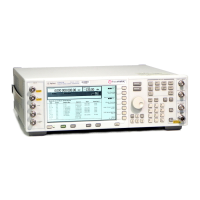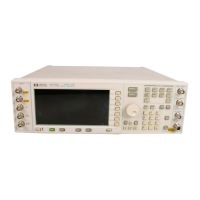12
www.agilent.com/find/esg
Figure 10. Payload Setup for a multi packet sequence with continuous PN9 user data.
Payload summary section
Full packets – Number of packets with payload filled to capacity.
Partial packets – Because the payload portion of each packet is filled to capacity if
possible, the number of partial packets appended to the end of a packet sequence will
always be 0 or 1.
Pad packets – When the software creates a multiple packet sequence, the sequence
bit in the header field is toggled after each packet transmission in the sequence. This
indicates to the Bluetooth device that the incoming packet is not a re-transmitted packet.
To maintain an alternating sequence bit when the waveform is repeatedly played back, an
even number of packets must be generated. If the data pattern length is set such that an
odd number of packets are required to send the data, then a pad packet is appended to
the end of the packet sequence. The pad packet has no payload and is only generated in
this circumstance to accommodate the alternating sequence bit.
User File
If User File is selected as the Data Pattern, the bits in the user data file will be distributed
across multiple packets. The payload of each packet in the sequence is filled to capacity
with the user’s data file, up to a maximum of 80,000 bits. The packets will contain the
maximum number of bits for each packet type as long as bits are available from the
user’s data file. The same conditions apply to the User File as the other, multipacket
Data Patterns mentioned above, except the Pattern Reps setting is fixed at 1 repetition.
Creating Signals

